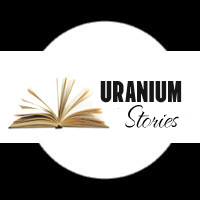- Why Mining Matters
- Jobs
- Safety
- Environment & Operations
- FAQ
- Links
- Fun Stuff
You are here

Gallihar and Dimock
Mr. Death
The Guilty Grenos
James Mitchell
Hugh McAskill
Gold Grows Under Shrubs?
Unexploded Dynamite
Tangier’s John Murphy
Joe Howe Dimock
Chats with Pioneer Miners
Charles Annand
John Scott Williams
Nicholas Fitzgerald
Chief Lonecloud
Pistols and Gold Mines
James MacDonald’s Thefts
John Vaughn
Herbert Dixon and the Halifax Explosion
James Bishop
Neily's Scandals
Waverley in 1934
Discovery of Gold at Dufferin
Hurricane Island
Fletcher and Faribault
Jack Munroe
Mine Apprentice Project
Small Gold Districts
15 Mile Stream
Tributers
E. Percy Brown and the Brookfield Mine
Barachois
Nova Rich Mines
Shad Bay Treasure Hunt
Montague 1937 Accident
Father Lanigan’s “Prospect”
George V. Douglas
The Stewart Brothers
Goldboro
Moose River's Touquoy Mine
Camerons Mountain
Jim Campbells Barren
Stanburne's Puzzling Gold Mine
Pockwock
Beaverbank Lake
Banook Mining Company
Deep Gold Mining
Wellington
Arsenic and Gold
Dynamite
War of Words
King of the Klondike
Oliver Millett
Kempt Gold Mining Company
Carleton
The Memramcook Fiasco
Love and Gold in Oldham
Montague 1893 Disaster
Central Rawdon Consolidated Mines
Cochrane Hill
Amateurish Early Gold Mining
Sable Island Gold
The Sea Wolf
Trueman Hirschfield
Alexander Heatherington
Prospector Joe Cope
Killag Quicksand
George W. Stuart
Wellington
Billy Bell
Cooper Jim Mine
South Branch Stewiacke
Walter Prest
Lake Charlotte
Acadia Powder Mills Company
The Ovens Anticline
Moose River Anticline
Avon Mine Explosion
Montague
Waverley Claims Dispute
Avon River
Moose River Disaster
Mooseland Scam
New York and Nova Scotia Gold Mining Company
Rosario Siroy and the South Uniacke Gold District
Blockhouse
Killag Gold District
Miller Lake
Baron Franz von Ellershausen
Mooseland: Nova Scotia’s first Gold Discovery
United Goldfields of Nova Scotia
Pleasant River Barrens Gold District
Lochaber Gold Mining Company
Rawdon Gold Mines
MacLean Brook
Gold in Clayton Park?!
Forest Hill
Meguma vs. Placer Gold
Uniacke
Voglers Cove
Gold River
Moosehead
Goldenville
Westfield
Indian Path
Harrigan Cove
Centre Rawdon
Nova Scotia’s Gold Mining History
WWII Gold
Middle River Gold District
Early Gold Discoveries
Halifax 1867
Paris Exhibition 1867
Mining and Tourism
An Act relating to the Gold Fields
Molega Gold District
Brookfield Gold District
Gays River
Halifax Gold
Caribou Gold District
Renfrew Gold District
Oldham Gold District
Whiteburn Gold District
Country Harbour Mines
Waverley Gold District
Robert Henderson and Klondike Gold
George Mercer Dawson
Cow Bay Gold District
Lake Catcha Gold District
Wine Harbour Gold District
Tangier’s John Murphy
John Murphy was reportedly Nova Scotia’s oldest gold miner in 1922, and the last surviving miner from the Tangier gold district’s first gold rush.
Gold was discovered in Tangier, Halifax County, in 1861. Over 600 miners and prospectors quickly arrived in the area to seek their fortunes. To address this sudden influx of people – most of Nova Scotia was wilderness in that period so 600 people descending on a place like Tangier was extraordinary - Tangier soon became the first proclaimed gold district in Nova Scotia.
The November 25, 1922, edition of the Evening Mail described Murphy, then 83 years old, as “Pale and gaunt from a life spent below earth’s surface, yet full of energy and enthusiasm.”
Murphy commented on his age, saying, “A pretty good spell to have been knocking around – 60 years of it in the gold mines.”
Tangier’s gold mines were largely idle in 1922, as most gold mines in Nova Scotia were due to a downturn in the sector, and Murphy said he was the last gold miner in Tangier. “I’ve outlived nearly the whole of them. Of the original mining settlers of Tangier, there is only myself and Mrs. Miller left…I don’t know which one of us will tough it out the longest.”
According to the article, sisters Mary and Margaret Miller, originally from Pictou County, ran Tangier’s only hotel in 1922. Mary also managed the community’s sole public telephone and was the first female candidate for County of Halifax council, “and one of the few in the Province of Nova Scotia.” Margaret ran the post office. One or both of them moved to Tangier in 1862.
Murphy said, “I came to Tangier from Tracadie Road, Guysboro, in 1861. There were 1600 men, all strangers to me, when I came in. I am the only miner left.” (Historical estimates of the number of prospectors who went to Tangier in 1861 differ. In truth, the number was probably impossible to determine at the time since there was very little government regulation of gold mining immediately following the first discoveries of it in the province.)
Murphy described how gold was discovered in Tangier: “Capt. Peter Mason, who owned the land at Tangier (having bought it from an old grantee) discovered the gold when he was hauling wood on April 1st. His sled passed over some rocks (the snow being almost gone) and overturned one which showed a big piece of gold. Mr. Mason had heard of gold being found in Mooseland N.S. He took the stone to town and showed it to Fraser, a druggist (since deceased.) Mr. Fraser pronounced the ore, gold.” (In the August 30, 1883, edition of the Halifax Herald, Mason said he showed the rock to a Halifax jeweler, not a druggist.)
Mason’s find triggered a gold rush in Tangier, which became world-wide news. In addition to the sudden influx of prospectors and miners, Tangier was visited in July 1861 by Prince Napoleon (cousin of Emperor Napoleon III of France) and his wife, Princess Clotilde (daughter of King Victor Emmanuel II of Italy), who sailed into Tangier Harbour on their yacht, the Jerome Napoleon.
Three months later one of Queen Victoria's sons, HRH Prince Alfred, also visited. Today, Prince Alfred Arch stands in Graeme Ferguson Memorial Park in Mason’s Cove, where Prince Alfred landed. The arch is made of granite and commemorates an arch of spruce branches and flowers that was made at the time of Alfred’s visit.
The Evening Mail article included a description of how the miners saluted the Prince when he arrived. Since miners did blasts to extract gold-bearing rock, they decided to do a series of blasts in the Prince’s honour. It was the miners’ version of a 21-gun salute:
“So rocks from Government Wharf to Strawberry Hill were bored with holes and filled with [blasting] powder under the direction of William Anderson of Petpeswick, who was Government Surveyor. The miners met the royal Prince at the wharf, and marched with him and his ship’s crew to Strawberry Hill. At Mr. Anderson’s signal, the charges in the rocks went off one by one. Such a welcome never was as was the miners’ welcome of Tangier. The hills even added their echo and swelled the volume of the sound. Prince Alfred shook hands with the miners, among whom was John Murphy, and they were later invited to a return visit on one of his ships.”
The Tangier district went on to produce an estimated 29,360 ounces of gold from 57,350 tons of ore in the historical era.
The Department of Mines’ 1892 annual report said of Tangier, “Mining operations have in this place been virtually at a stand-still for some years past, but John Murphy never lost faith in it, and his patience and efforts have at last been rewarded by striking what some think to be a good paying lead.”
The Geological Survey of Canada’s 1929 report on the history of Nova Scotia’s goldfields noted that the chapter about Tangier “would be incomplete without the mention of John Murphy, who is well known for the great amount of prospecting he did in this district.”
Despite the downturn in gold mining at the time of the 1922 interview, Murphy said, “There’s gold in the place. Only the gold laws of Nova Scotia are bad and must be changed. Men ought to be as free to dig gold as to pick blueberries – dig where you like, how you like and when you like. As the laws are now, Nova Scotia mines are held up by a few companies or what calls themselves companies. They will not work nor let anybody else work, unless they have the lion’s share, which is the most of the share; for when the lion eats all he wants, he walks off and leaves the rest, which is mostly bones, and the next comer can have that.”
In the modern era, the mining and quarrying industry is very stringently regulated by the provincial and federal governments. For example, a mine’s environmental assessment often takes 3-5 years of baseline, feasibility and design studies and costs are routinely in the millions of dollars.
Before getting operating permits, companies must get government approval of reclamation plans and post-reclamation bonds (money in escrow, basically) that ensure funds are available to properly take care of sites. Reclamation is a key part of the mining process now.
While we do not endorse Murphy’s “dig where you like, how you like” approach to regulation, it is still the case that the Government of Nova Scotia needs to reduce red tape in its permitting process while continuing to ensure the highest environmental standards are applied.
The Tangier gold district has been an exploration target on and off for many decades. In the mining industry, we say new mines are often found next to old mines because historical sites worked with basic tools and little science can today be mined profitably and environmentally-responsibly with modern science and engineering.
That is why almost all the activity in Nova Scotia’s gold sector is at historical districts, like Tangier, that were first mined in the 1800s and still have the potential to return to production and create jobs for Nova Scotians.

















































































